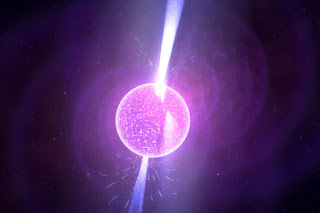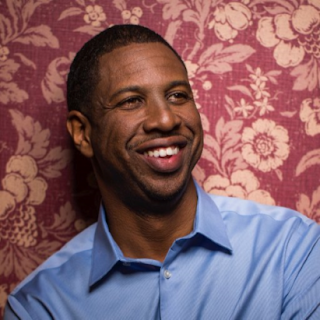 |
| Source: Ecosia Images |
Topics: Civics, Existentialism, History, Politics
"We are a people of different religions, but we are one. Which faith conquers the other is not the question; rather, the question is whether Christianity stands or falls... We tolerate no one in our ranks who attacks the ideas of Christianity … in fact our movement is Christian. We are filled with a desire for Catholics and Protestants to discover one another in the deep distress of our own people." (1928) Wikiquote: Religious views of Adolf Hitler
*****
Fascism is a movement that promotes the idea of a forcibly monolithic, regimented nation under the control of an autocratic ruler. The word fascism comes from fascio, the Italian word for bundle, which in this case represents bundles of people. Its origins go back to Ancient Rome, when the fasces was a bundle of wood with an ax head, carried by leaders.
On March 23, 1919, the Fasci Italiani di Combattimento — a group that grew out of a number of earlier movements that had also used the image of the fascio in their names — met for the first time in Piazza San Sepolcro in Milan. At this rally, Mussolini said that membership in the new group “commits all fascists to sabotaging the candidacies of the neutralists of all parties by any means necessary.”
“Mussolini thought that democracy was a failed system. He thought that liberty of expression and liberty of parties was a sham, and that fascism would organize people under state power,” Ben-Ghiat says. “Their idea was you would be freer because you wouldn't have any class consciousness. You’re just supposed to worship the nation. It’s nation over class.”
The corollary of that belief was the idea that anything that might impede national unity had to be gotten rid of, and violently. In fact, violence was seen as beneficial to society.
And “society” was not a loosely defined idea. Rather, Mussolini and those who came after him had very specific ideas about who got to be part of the nation. It followed that those who did not fit the mold were seen as disruptive to that unity, and thus subject to violence.
What to Know About the Origins of Fascism’s Brutal Ideology, Olivia B. Waxman, Time
To set the tone for a dystopian movie, one typically gets a noir treatment: lighting is dark, air is misty; camera angles are stark and weather is typically overcast. The decision to "go glum" is likely due to only having a few hours to make their point and resolve any plot twists to the denouement and conclusion. An in-your-face theatrical release might involve swastikas, goose stepping and nostalgic, feel-good faux patriotism.
Even though there have been decidedly darker days under authoritarian regimes, every day looks like any other day when ruled by fascism. There are for example, photos of Hitler on holiday at his villa in Bavaria. It looked sunny; he (for a monster) looked happy.
Democracy depends on a shared set of facts that can be debated in discussed either in a court, on a congressional floor or near a coffee machine at work. It's affable and seeks a happy medium: no one gets everything they desire, but it does require compromise.
Fascism is nothing at all like that. Like George Orwell's famous novel, "1984," fascism requires and demands power for its own sake. It wants what it wants for the sake of wanting. History has no meaning to it at all. Logic and reason have no appeal or sway in people who traffic in "alternative facts" or its Karl Rove precursor: "created realities."
- It is why you can justify the outright theft of land from First Nations' peoples and slaughter them at will for "Manifest Destiny."
- It is why you can have the transatlantic slave trade with no moral or monetary compensation (reparations) to its African Diaspora descendants.
- It is why they demonize people of color as "lazy, shiftless, moochers and cheats" on all things, particularly academic, and now the SAT college scandal has blown up the previous myth of meritocracy in their faces that they were desperate to maintain for credentials and supremacy.
- It is why as presidential Manchurian Candidate, can say "WikiLeaks! I love WikiLeaks," and on the arrest of Julian Assange can say with a straight, orange face "I know nothing about WikiLeaks."
- It is why the same can incite violence of his followers and deny doing so in the same breath.
- It is why the Attorney General can send an unsolicited 19 page memo campaigning for a job to essentially not be the top cop, but the president's personal Roy Cohn and slow walk the Mueller Report to Congress and the public.
- It is why we insist on telling ourselves comforting fables about American benevolence; about being Winthrop's "shining city on a hill" (who himself had no stomach for "the other") so as to not face our own national depravity...
...our own foundation of racism, sexism, homophobia, genocide and fascism.
Giovanni Gentile (not Mussolini) coined the phrase "Fascism should more properly be called corporatism, since it is the merger of state and corporate power." But this is not what access media conglomerates will say about it. They'll pretend there is still a middle ground that only requires compromise and clever arguments. They will still opine for a former, mythological days where things worked if only (typically) democrats gave concessions to republicans' demands.
During the Great Depression, Marine Major General Smedley Butler narced on what was called the Business Plot to overthrow Franklin D. Roosevelt and install Butler as a dictator compliant to corporate interests. He wrote the treatise "War is a Racket."
There are quite a few American billionaire families with Nazis ties, starting with Ford, GM, Chrysler, IBM, and JP Morgan Chase. The Koch’s father did business with the Nazis and Russians. The Bush’s and Kennedy’s (Prescott and Papa Joe) were Nazi sympathizers.
Ayn Rand provided the fictional cover: behind every massive fortune, there are likely crimes.
*****
To set the tone for a dystopian movie, one typically gets a noir treatment: lighting is dark, air is misty; camera angles are stark and weather is typically overcast.
When you tell yourself comforting lies, a liar may ascend to power.
Fascism like weather can change its environs and display its power on blithe, sunny days.
Related link:
More Than A Dozen European Billionaires—Linked To BMW, L’Oréal, Bosch—Have Families With Past Nazi Ties
Madeline Berg, Forbes Magazine















